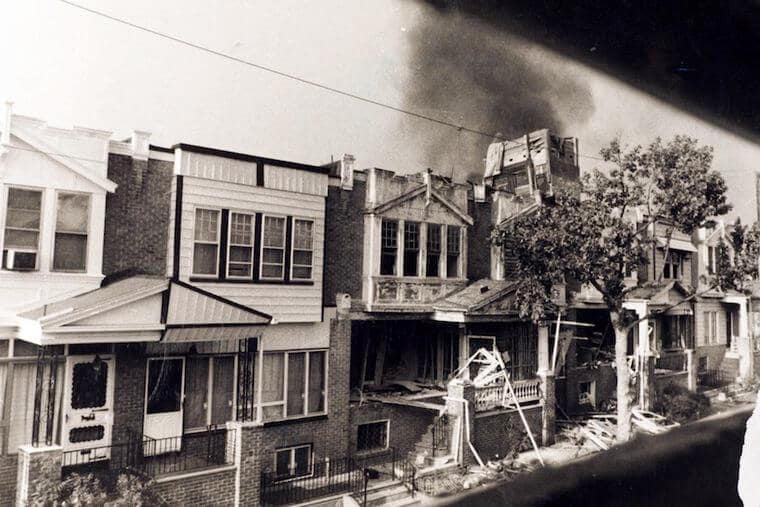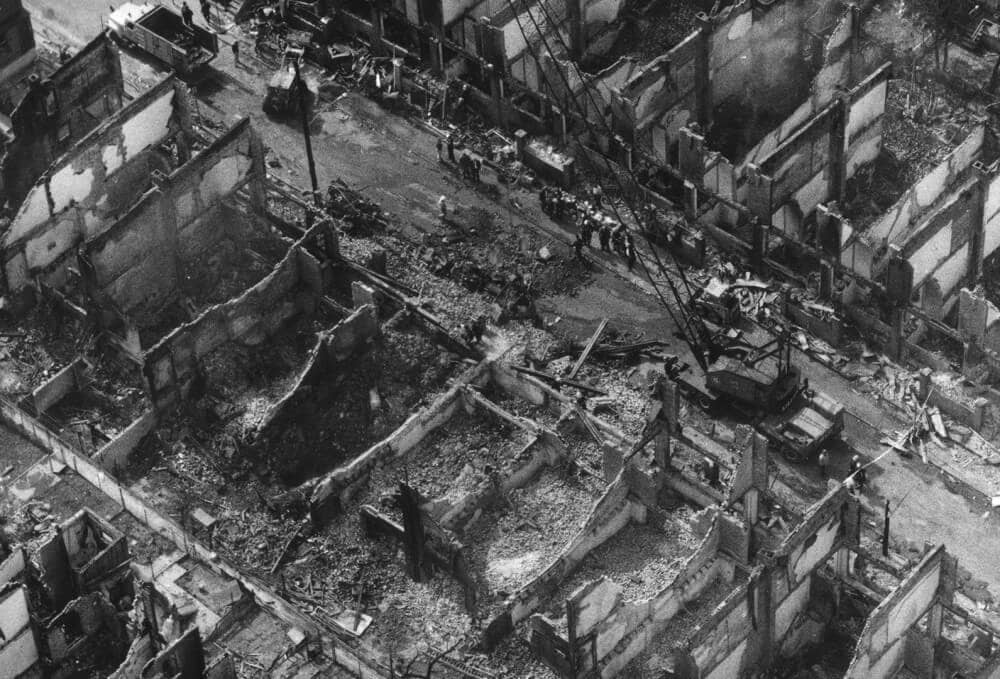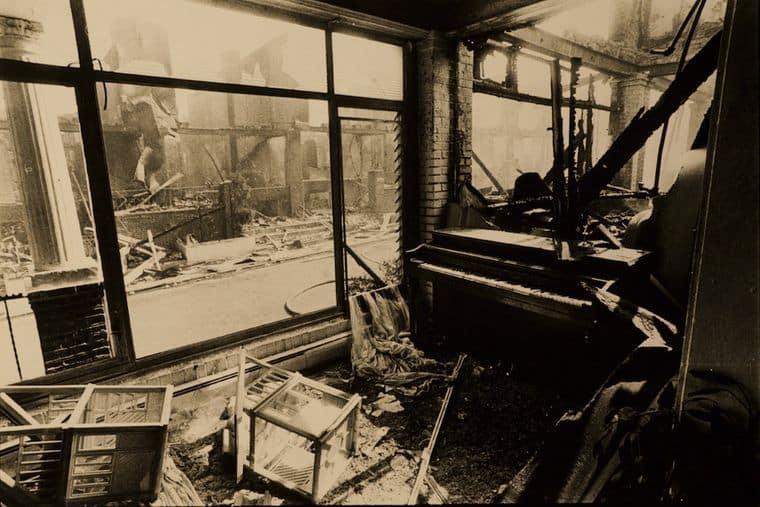It has been heartening to see so many White folks engage in actions for racial justice over the past year. The decades of work by Black activists and this emerging cadre of White accomplices, if they stay the course and learn to listen to people of color and study history, offer the real possibility that the moral arc of the universe will move closer toward justice.
Sadly, the historical amnesia of most people, both manufactured and understandable, allows two distinct and dangerous perspectives to exist: presentism and post-racialism. The belief that we have overcome systemic racism and the sense that the dehumanization of Black lives is somehow a recent phenomenon undermines White ability to see the depth of meaning in Black Lives Matter. Additionally, historical amnesia limits the ability of many White people to come to terms with the reality that racist disparities neither ended with the 13th Amendment, nor with the legal successes of the Civil Rights Movement.



Thirty-six years ago, on May 13, 1985, Philadelphia officials authorized the aerial bombing of its own citizens: members of the home of the MOVE and the Africa family. The Africa family lived communally with a deep religious view about nature and all living things, and sometimes entered the family as children whose parents were imprisoned. The rationale for the assault? – to enforce an order to vacate. At first, the home was flooded with water, and then, police fired an estimated 10,000 rounds at the MOVE compound. Those decisions led to the death of 11 people, including five children. A further choice to “let it burn” helped the ensuing fire spread and destroy 61 nearby homes.

Without doubt, the members of MOVE, led by John Africa who died in the bombing and was a Korean War veteran, lived what White and many Black folks saw, and see, as a curious lifestyle. They were radical naturalists, fervently anti-government, anti-technology and anti-capitalist. White authorities and even a number of Black neighbors complained about the condition of their house.
None of that justifies three important horrors connected to that deadly day.
- In what vision of a civilized society that lives by the “rule of law” can one envision the intentional bombing of a home, in particular with children in it?
- Why don’t many Americans know of this, and why doesn’t that portion of the political Right reference it in its condemnation of government overreach or its deification of anti-government extremists like Tim McVeigh, Randy Weaver, Waco or Cliven Bundy?
- The treatment of the remains of at least two children killed in the attack. Less than three weeks ago, primarily due to the dogged research of a PhD student, it was revealed that Penn and Princeton were implicated in exploiting these remains without permission or even knowledge of the family. The bodies were used for medical teaching and study. At least one appeared in an online Coursera course, and there is indication of other forms of brutalization to their bodies. This indicates that some people still see Black lives as less worthy of respect.

This single marker exists to remember the bombing. It came about largely as the result of students at the private Jubilee School in Southwest Philly studying the case. For over two years, fifth, sixth and seventh grade students spent time after school and on weekends learning and preparing, and then in 2016 proposed the marker.
Despite a commission established in 1986 to study the events and recommend various changes, an apology only came two years ago.
Why does this matter for those of us living in the Pittsburgh area?
Foremost it is a human tragedy.
Beyond that, the continued complicity today across the nation of the police and their supervisors, the training and tactics of law enforcement, the lack of fair and impartial judges and the need for independent oversight of the criminal justice system cry out for action.
The national reputation for questionable law enforcement practices of Philadelphia is far better known. In the past five years alone, at least 24 men convicted of murder have been released due to dubious actions of police or prosecutors and a number of judges too quiet to challenge such tactics.
Yet, Pittsburgh has our own moments to consider: Antwon Rose’s name is well known today, but sadly less so Miles Jordan and Jonny Gammage, to name but three.
Focusing closer to M.O.R.E’s home, Mt. Lebanon has its history and present to contend with and transform. The efforts of M.O.R.E’s Justice Reform Committee to engage and move the Mt. Lebanon Police Department to more transparent positions regarding their use of force, sharing of data regarding police stops, and social media usage show the struggle is ongoing and not easy. Perhaps the immediate answer to, “what can be done?” involves adhering to the essence of MOVE – and be “on the MOVE” rather than move on, and hold the police, prosecutors, and judges accountable for their actions. Each of us can approach the May 18th primary as an act of anti-racism and vote for progressive candidates that prioritize equity and the rights of all.
This opinion article was written by Pete DiNardo, a high school teacher in Mt. Lebanon and founding member of M.O.R.E and its Anti-Racism Education Committee (AREC), and originally published by M.O.R.E on May 12, 2021.
If interested in learning more about the last 31 years and MOVE read, “The MOVE bombing was a Philadelphia tragedy — and an American one | Opinion” by Mistinguette Smith, Philadelphia Inquirer, May 8, 2021 (7-minute read) or watch these videos:
- “The Day Police Dropped a Bomb On Philadelphia | I Was There” Vice, Nov. 11, 2020 (12:22). Covers the history of MOVE and the events of May 13, 1985, using news footage from the era, and reflections primarily of Ramona Africa, who was in the house on May 13th and later arrested and sent to jail for seven years. Brief comments also include Mayor Frank Rizzo and others.
- “Harm Is Still Being Done”: 36 Years After MOVE Bombing, Misuse of Children’s Remains Reopens Wounds” Amy Goodman, Democracy Now, May 11, 2021 (17:51). As the title suggests, this episode focuses on the recent disclosure of the misuse and desecration of the children’s remains. It features Mike Africa and journalist-activist Abdul-Aliy Muhammad.
- “The 1985 Move bombing in Philadelphia – The Confrontation” The Philadelphia Inquirer, uploaded November 2018 (15:48). Produced for the 25th anniversary of the 1985 Move bombing in Philadelphia, in this video retired Philadelphia police officer James Berghaier and Move member Ramona Africa describe the fatal confrontation between police and MOVE.
- The 1985 MOVE bombing in Philadelphia – Before the bombing The Philadelphia Inquirer, May 13, 2020 (5:46). Osage Avenue neighbors describe their life with MOVE leading up to the bombing and destruction of their homes.
- “Bombing of Osage” PBS, May 1, 2014 (57:26). Describes the confrontation between Philadelphia Police and members of the MOVE organization on Mother’s Day, 1985, which left 11 men, women, and children members of MOVE dead and 61 homes destroyed by fire. The events are situated in the history of Blacks in Philadelphia, the MOVE organization, and the Cobbs Creek neighborhood.

